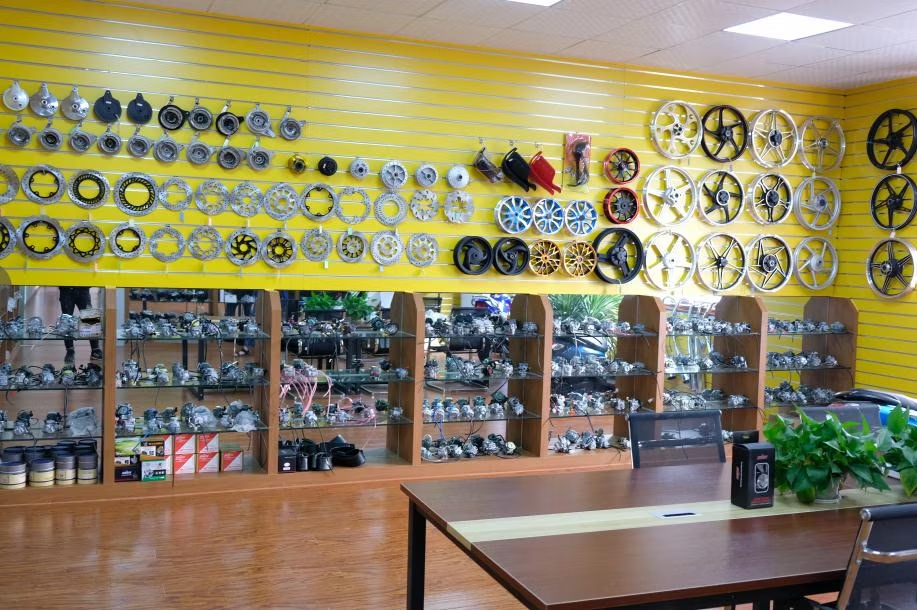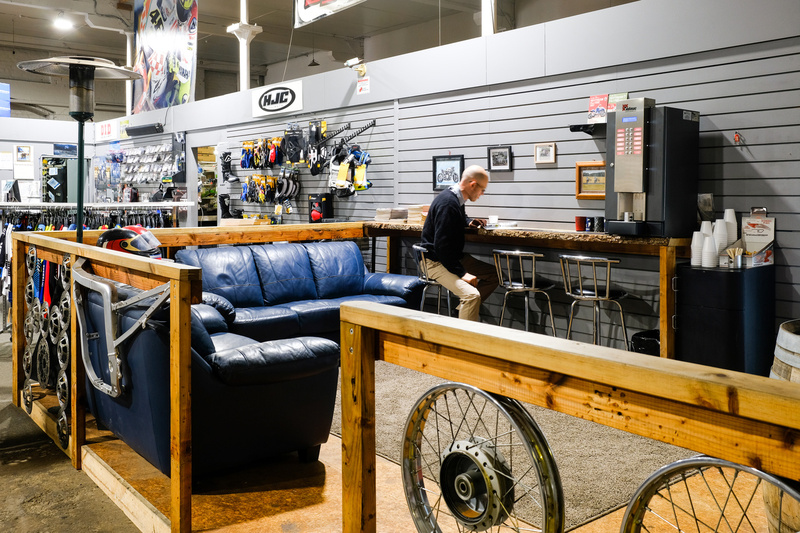Discover Affordable Prices on Motocross Parts NZ for each Bike
Discover Affordable Prices on Motocross Parts NZ for each Bike
Blog Article
Recognizing the Crucial Components of a Motorcycle: A Comprehensive Overview for Enthusiasts
For motorcycle enthusiasts seeking to boost their riding experience and ensure their bikes run efficiently, recognizing the vital parts of a motorcycle is critical. Each aspect, from the engine's complex functions to the important duty of the braking systems, not just affects performance however likewise safety and security and comfort. This guide will go through the fundamental parts that every motorcyclist need to be familiar with, enabling notified options in both upkeep and possible upgrades. As we start this expedition, one must ask: just how does each component interact to create the seamless trip every lover looks for?
Engine Elements

The camshaft plays a critical function in regulating the timing of the engine's valves, making certain the accurate opening and closing essential for effective gas and air intake, along with exhaust expulsion. This timing is vital to keeping optimal engine efficiency and performance. Additionally, the carburetor or gas shot system, depending upon the motorbike version, is in charge of blending air with fuel in the right ratio for combustion.
The cooling system, either air or liquid-based, functions to maintain the engine's temperature within functional limits, protecting against overheating and guaranteeing long life - mx gear nz. Each component, meticulously made and integrated, contributes to the smooth procedure of the engine, specifying the bike's power output and total efficiency
Transmission System
Integral to the motorcycle's performance, the transmission system makes sure effective power transfer from the engine to the wheels. This system consists of a number of essential components, including the clutch, transmission, and last drive, each playing a vital role in translating the engine's power into activity. The clutch, usually run by a hand lever, serves to disengage the engine and involve from the transmission, permitting smooth equipment adjustments and regulated velocity.
The transmission, typically described as the transmission appropriate, includes a collection of equipments that motorcyclists can by hand move with to change the bike's rate and torque outcome. These equipments are arranged in a series that enables the motorcycle to accelerate smoothly and keep ideal engine efficiency throughout different speeds. Many motorbikes make use of a consecutive gearbox, needing the motorcyclist to move equipments in a fixed order.
Braking Devices
While understanding the transmission system is vital to using a motorcycle's power, similarly vital is the capacity to regulate and stop that power efficiently, which is where stopping mechanisms come into play. Brakes are crucial for safety and security and efficiency, providing the rider with the necessary control to browse various terrains and conditions. Typically, bikes feature two kinds of braking systems: disc brakes and drum brakes.
Disc brakes are extra common in modern-day motorcycles due to their remarkable performance. They contain a brake disc, caliper, and pads. When turned on, the caliper presses the brake pads versus the spinning disc, transforming kinetic power into warmth, consequently i loved this slowing the wheel. This system provides better warmth dissipation, constant efficiency, and enhanced stopping power, specifically in wet conditions.
Conversely, drum brakes, though less usual, are still found in some bikes. They work by pushing brake shoes against the inner surface of a drum affixed to the wheel. While typically much less reliable in heat dissipation and quiting power, drum brakes are less complex and much more cost-efficient.
Understanding these braking systems' nuances enables cyclists to keep their motorbikes appropriately and value the design that ensures reliable and risk-free quiting.
Suspension and Guiding
Suspension and steering systems are important elements that substantially affect a motorbike's handling and adventure comfort. The suspension system, including forks at the front and shock absorbers at the rear, absorbs road irregularities, improving stability and control. Front forks, usually telescopic or upside down, compress and rebound to mitigate impacts, while rear shock absorbers maintain tire call with the roadway, essential for traction and safety and security.
Steering, centered around the handlebars, attaches the cyclist to the motorcycle's directional control. The steering head bearings guarantee smooth operation, allowing accurate maneuverability. Proper alignment and maintenance of these bearings are important for predictable steering action and lowering motorcyclist tiredness.
The suspension's adjustability a knockout post is an additional important element; preload, damping, and rebound setups allow modification to match different riding conditions and designs. This versatility is vital for optimizing efficiency, whether navigating urban streets or taking on tough trails. Technologies like digital shock absorber offer real-time changes, improving ride top quality across varied terrains.

Electric Solutions
After making sure a controlled and smooth adventure with reliable suspension and steering systems, focus turns to the electric systems, a pivotal element of modern motorbikes. These systems play an important function not most expensive helmet just in starting the engine however additionally in powering various elements that boost the functionality and safety of the bike.
At the heart of a motorcycle's electrical system is the battery, which shops electric power necessary for starting the engine and powering supporting systems - motorbike shop. The alternator or generator, combined with the rectifier-regulator, makes sure the battery stays billed while the motorcycle functions, converting mechanical energy into electrical power and keeping voltage degrees
The ignition system, an additional vital element, is accountable for firing up the air-fuel blend in the engine's cyndrical tubes. Modern bikes often utilize an electronic ignition system, providing better performance and integrity compared to traditional systems.
Lighting systems, including headlights, tail lights, and indicators, are additionally essential, making sure exposure and security for the motorcyclist. Added digital parts such as sensing units, control units, and shows add to innovative features like fuel shot management, anti-lock stopping systems (ABDOMINAL MUSCLE), and electronic dashboards, even more enhancing the riding experience.
Final Thought
A detailed comprehension of a motorcycle's crucial parts, consisting of the engine, transmission system, braking mechanisms, suspension, guiding, and electric systems, is important for enthusiasts intending to enhance performance, convenience, and security. Proficiency of these elements permits for informed choices regarding upkeep and upgrades, ultimately improving the riding experience. By incorporating this knowledge, motorcyclists can ensure their motorbikes run at peak efficiency and dependability, therefore maximizing both pleasure and long life of their vehicles.
For motorbike enthusiasts looking to raise their riding experience and ensure their bikes run efficiently, comprehending the important parts of a motorbike is extremely important.Essential to the motorcycle's functionality, the transmission system makes certain effective power transfer from the engine to the wheels.While recognizing the transmission system is essential to utilizing a motorcycle's power, just as important is the capability to manage and quit that power properly, which is where stopping mechanisms come into play. Usually, motorbikes include 2 kinds of stopping systems: disc brakes and drum brakes.
A comprehensive comprehension of a motorbike's necessary parts, consisting of the engine, transmission system, stopping devices, suspension, guiding, and electric systems, is crucial for enthusiasts aiming to enhance security, comfort, and efficiency.
Report this page